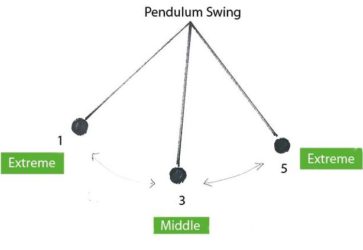There is a bond bubble of epic proportions today. Nothing illustrates this bubble better than the German bond market, where the 10-Year German Treasury Yield is -0.71% annually.

Look at the above chart again, and think about the consequences. Who would buy a 10-Year Treasury, resigning themselves to an almost 3/4 percent nominal loss annually, which is amplified when measured in real terms?
We will revisit this question later in this post.
Building on the narrative above, there is over $16 trillion in negative yielding debt today, with negative yielding debt surpassing its previous 2016 high levels, so clearly there are a number of market participants who are currently willing to buy this negative yielding debt. From my perspective, these are mostly traders, who are flipping the bonds to the next buyer (a classic symptom of a bubble), and forced investors who are required to match the duration of their assets to their liabilities (think pension plans).
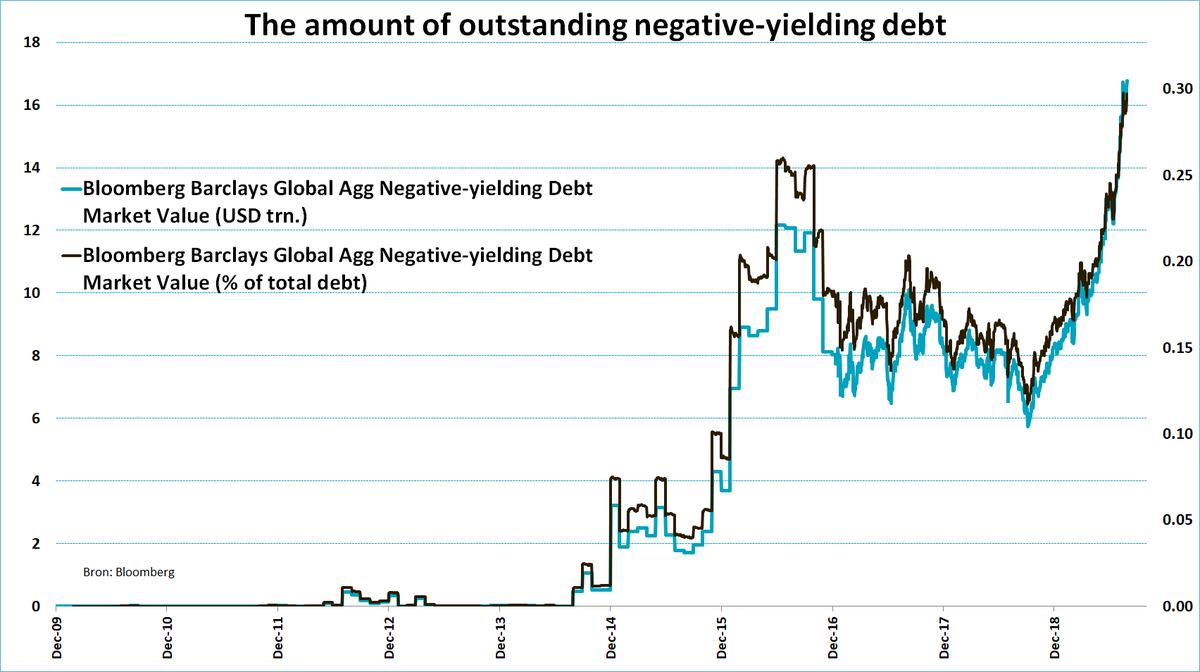
Looking at past bubbles, the irrationality of price insensitive buyers is prevailing right now in the bond market, however this is a temporary phenomena, something that will dissipate when the bubble dissipates.
In the U.S., 10-Year Treasury Yields are not below their 2016 lows, at least as of this writing, however, 30-Year Treasury Yields have made new lows.
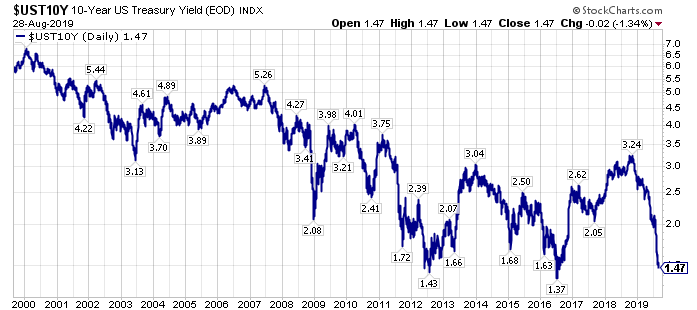
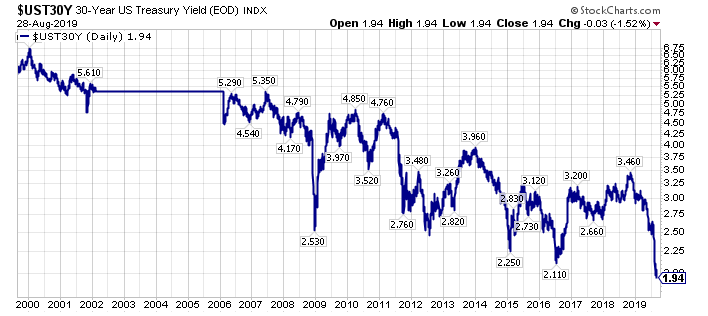
This has caused the iShares 20+ Year Bond ETF (TLT) to make new record highs, both on an adjusted, and un-adjusted basis.
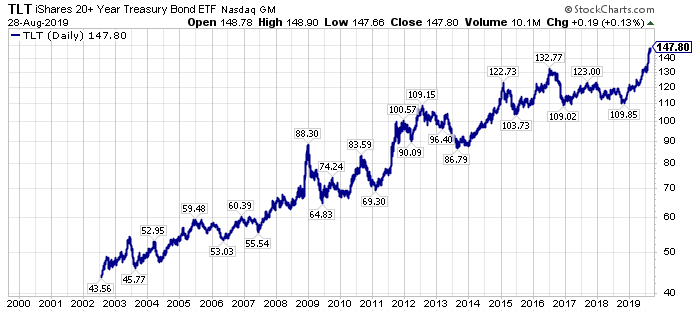
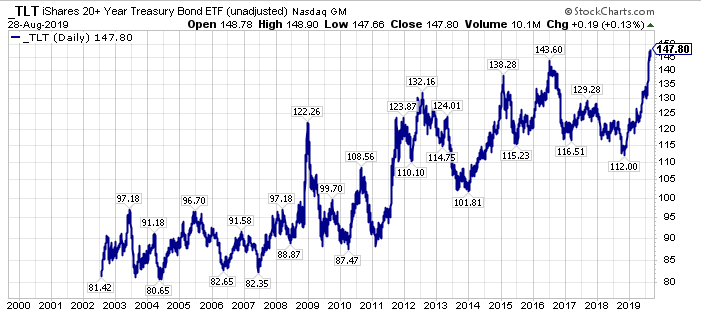
As long-term interest rates cascade lower, and yield curves invert, central banks are ratcheting down their short-term interest rate expectations. On this note, look at the Fed Funds Futures Curve one month ago (in red in the chart below) versus today’s expectations (in blue in the chart below).
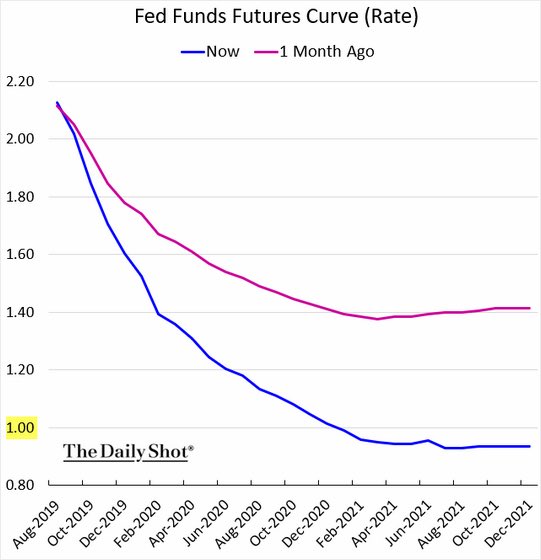
Short-term market projected interest rates are forecasting a steeper path downwards, mirroring the fall in longer-term interest rates, however this is happening as inflation readings, particularly the Median CPI (shown in yellow below), are at the highs of the current economic expansion in the U.S, and as the Citigroup Economic Surprise Index turns higher.
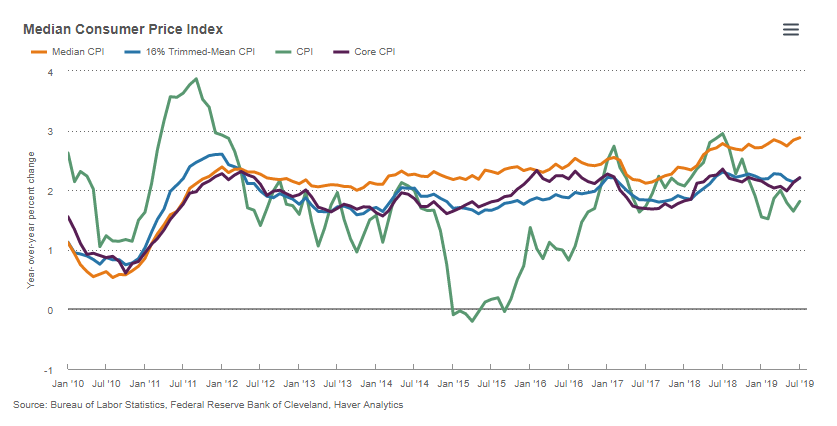
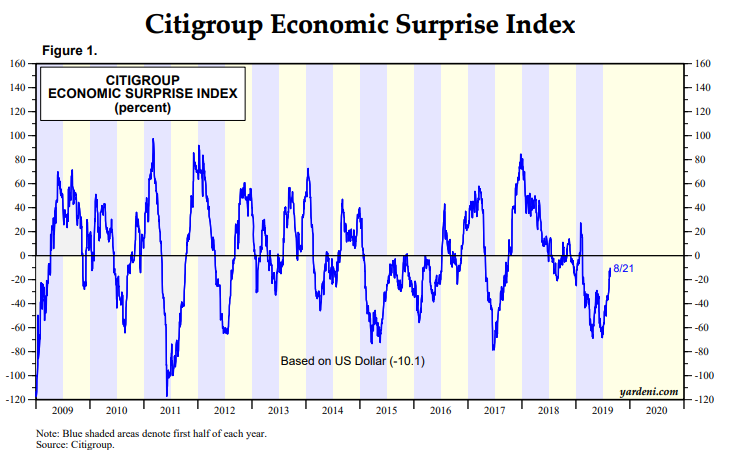
In summary, what happens when the Fed, and central banks ease into a cyclical upturn with bond prices at record highs?
We are about to find out, and if you have ridden this bond bubble, or have ridden some of the investments that have benefited from the bond bubble, specifically REITs (VNQ), (IYR), utilities (XLU), and the perceived higher quality investments, think stocks like Coca-Cola (KO), McDonald’s (MCD), and Procter & Gamble (PG), which have all levitated higher as interest rates have ratcheted lower, you should be thinking about your exit points, in my opinion.
Closing Thoughts – An Epic Bond Bubble With Sentiment At Extremes
The bond market is at the tail-end of a blow-off bubble, from my vantage point. Sentiment is extremely stretched today, rising to exceed previous highs, which is shown below with this chart from June of this year.
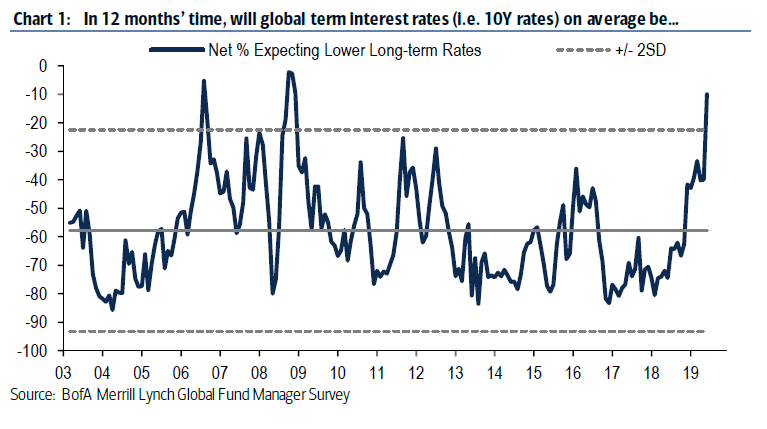
Since June of 2019, daily sentiment readings have risen further, and bond bullishness regularly has exceeded the 2008 /2009 highs.
This bond bubble, is one of a series of bubbles today, which I noted in a recent article as follows:
“Respectfully, there are bubbles everywhere. Specifically in:
- Confidence in central banks.
- In bonds, with record bond ETF inflows near all-time price highs at the end of an almost 40 year bull market.
- In yield-oriented Investments as central banks have pushed investors out the risk curve.
- In growth stocks, which are the longest duration assets.
- In passive investments, which are price insensitive buyers.”
Wrapping up, and circling back to the earlier question in the article, specifically, “who is buying these negative yielding bonds today”, the answer is primarily speculators, and like past manias, those left holding the “hot potato” are going to get burned.
For a look at a different research approach, I am offering a 20% discount to membership to “The Contrarian” (past members can also direct message me for a special rate), the lowest price point since the founding members price, where we have a live documented history dating back to late 2015, including an updated valuation and price target list for over 103 targeted companies, including several companies that offer upside appreciation potential that rivals the best opportunities of late 2008/early 2009, in my opinion.
Additionally, I am offering a limited time 50% discount for research services on this site. To get this offer, go here, and enter coupon code “august”.
Reach out with any questions.
Via my research services, or another avenue, please do your due diligence, and take advantage of what I believe is a historic inflection point,
WTK
P.S. Resilience, which I have written about, and not getting caught in the herd today (trades are more crowded today than in 1999 or 2007 from my perspective) is paramount for the investment landscape ahead, in my opinion.
Disclosure: I short tlt via put options.
Additional disclosure: Every investor’s situation is different. Positions can change at any time without warning. Please do your own due diligence and consult with your financial advisor, if you have one, before making any investment decisions. The author is not acting in an investment adviser capacity. The author’s opinions expressed herein address only select aspects of potential investment in securities of the companies mentioned and cannot be a substitute for comprehensive investment analysis. The author recommends that potential and existing investors conduct thorough investment research of their own, including detailed review of the companies’ SEC filings. Any opinions or estimates constitute the author’s best judgment as of the date of publication, and are subject to change without notice.

